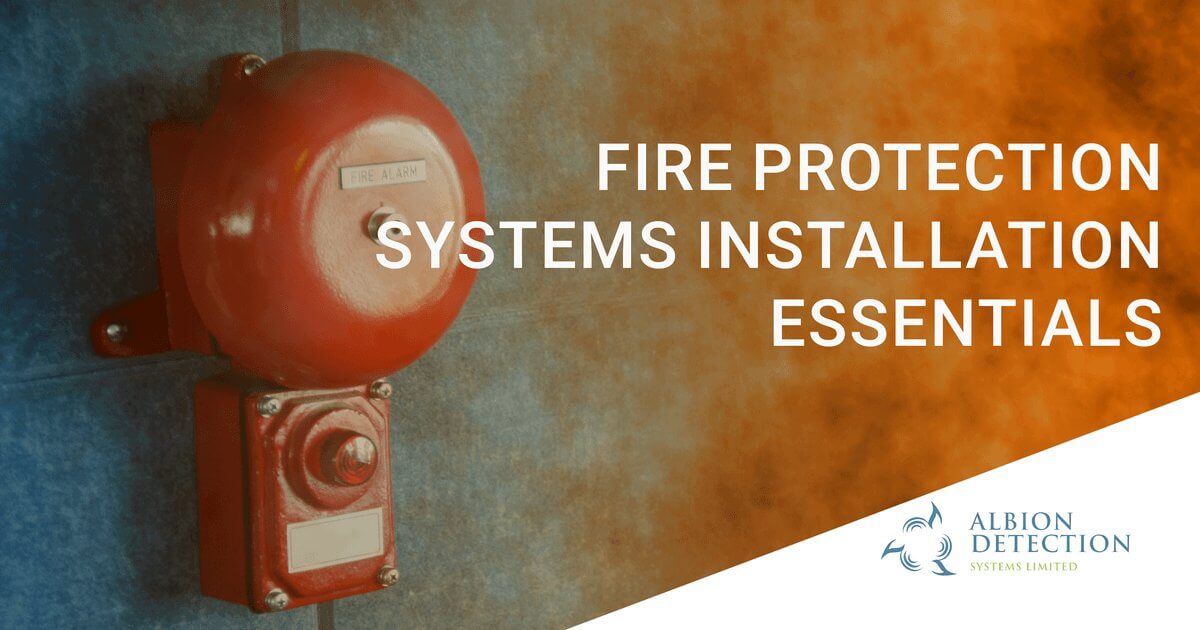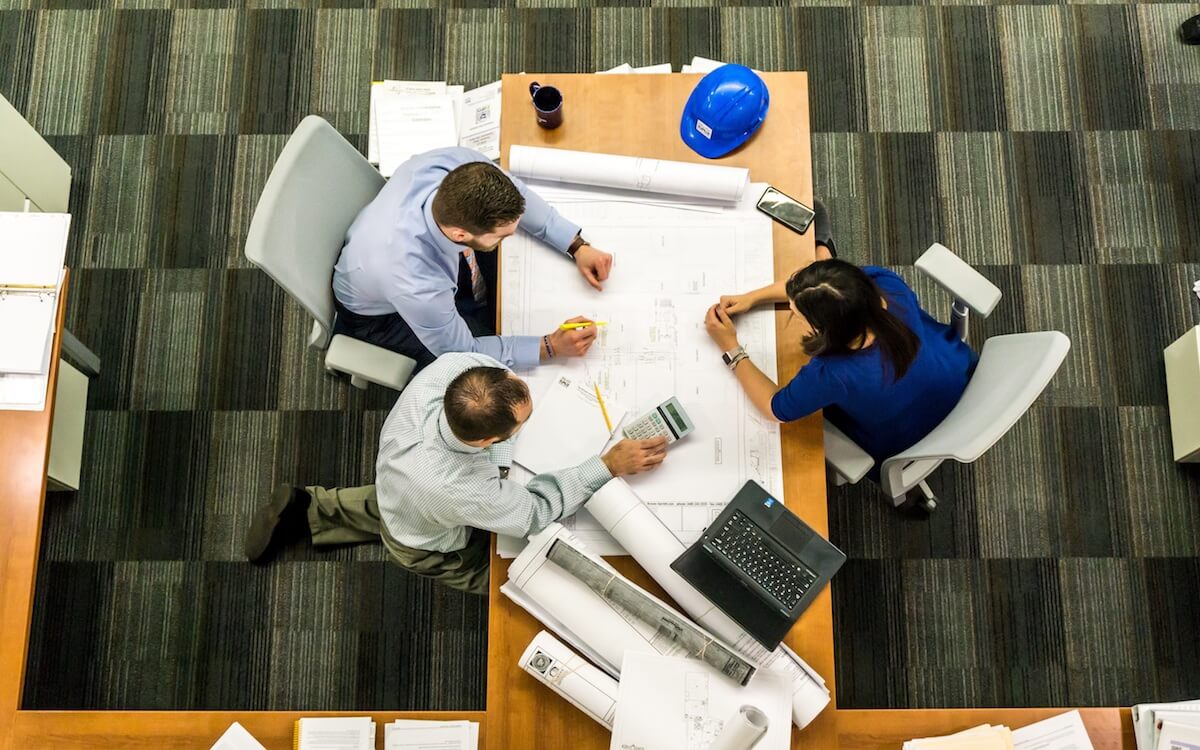
Fire Protection Systems Installation Essentials – Albion Detection System
The challenges and legal requirements for fire protection installation/fire protection systems into commercial premises are invariably more complex than those faced by residential properties.
Not only are there stringent standards to adhere to, but there are simply
- More people requiring protection,
- More detailed properties to protect,
- Often higher-value commercial assets that can be found in most homes and non-commercial dwellings.
As a result, installing fire protection systems requires a skilled approach and adherence to the legal conduct and best practice outlined by both your fire risk assessment and fire protection accreditations, as well as a keen understanding of precisely which pieces of fire protection kit you require, and where to install them.
Let’s take a closer look at the installation process and things to look out for.
Creating Your Fire Protection
Installing an effective fire protection system into a business premises demands a bespoke approach and keen understanding of the latest fire safety law.
For most companies, this will mean your installation must be carried out to the most rigorous of standards by an accredited installer.
Unlike many engineered systems, your fire safety provisions cannot be tested in ‘real life’ scenarios unless the worst happens.
The Strategic Planning Of Fire Protection
Therefore, each component of your fire protection needs to be planned strategically and be easy to maintain, to ensure it both follows accepted industry standards and protects those it needs to safeguard in the event of a fire.
When your own fire protection installation is being planned, the following information must be available to contractors to secure an accurate quote:
Detailed Fire Specifications
This will include parameters where protection is required, and any special considerations because of industry or hazardous materials stored on-site.
If your company has many levels or areas where flammable materials are handled, these areas will require special attention to comply with UK fire safety regulations.
Vague specifications could result in a vague bid, and lead to less than satisfactory fire protection.
Fire Protection Installation Design
It is standard practice for your installer to create the design drawings for your fire protection.
Your responsible person and any other relevant parties should carefully review and assess these drawings and recommendations based on their own knowledge of the premises and your company’s compliance requirements.

Choosing An Installer
Installing your fire protection system is one of the most significant steps you can take in safeguarding your business.
Not only will installing the correct fire protective kit and installer ensure you stay on the right side of fire safety legislation and fire regulations, but help to keep your company safe from fire damage for many years to come.
The installer you choose is therefore critical to the success or failure of your fire safety measures.
When selecting an installer, look out for the correct accreditation.
Fire safety accreditations are the most important part of choosing your installer.
These accreditations are provided by trusted third parties and companies with the accreditations you need can be found on the official BAFE website via the search function.
Be careful to ensure you select the correct accreditation for your installation, as not all installers have every single one available, and many specialise in particular areas.
If you fail to do your due diligence here, you will – whether by negligence or naivety, be guilty of putting your business at risk of fire-related damage.
The primary accreditations to look out for are the
- Fire Detection & Alarm Systems Scheme,
- The Emergency Lighting SP203-4
- And the Fixed Gaseous Fire Suppressions System SP203-3.
Adherence and acceptance of these frameworks ensure your chosen installer is adequately skilled to install fire alarms, emergency lighting systems and fire extinguishing equipment respectively.
Accreditations are approved by the UKAS Accreditation service, and the Fire Industry Association can also assist with finding installers with the right credentials.
The Installation Process
Once your fire safety provisions have been decided upon, designed and approved, and you have found an installer who meets your needs and possesses the correct fire alarm supplier accreditations to legally and competently complete the installation, you will need to accept and verify their bid and decide a timeline for completion.
The installation process should also require additional safeguarding in the form of non-destructive testing of each component, as testing in a fire-fighting environment is not possible.
The installer will work to ensure your installation is as non-disruptive to the company as possible, whether you are installing brand new kit to new premises for the first time, or upgrading your existing coverage as a result of changing legislation, business expansion or in response to an updated risk assessment.
Ensuring your installer is able to offer optimum protection and specialist installation should remove much of the worry from the installation process itself, having already identified the best installation methods to utilise, and the ideal placement of each component you require.
It is, of course, critical that every installation is completed to exacting standards to meet your own legal requirements with regards to fire protection for your commercial premises and standard health and safety regulation.
Therefore a degree of oversight will be necessary from your company during this phase.
Post-Installation Care
With your new fire safety protection system installed, you can now enjoy the enhanced coverage and a more efficient system in the event of a fire.
However, the process doesn’t end with installation.
You’ll also need to arrange fire alarm maintenance checks and perform in-depth monthly, six-monthly or annual fire safety assessments.
Whilst all equipment must be checked upon installation, selecting the same installer to both fit and maintain your fire safety equipment will ensure a seamless process which helps alleviate some of the pressure from your designated responsible person.
Taking this approach also ensures you work only with installers who are confident in their materials and know-how, providing you with the peace of mind which comes from knowing you are working with the very best in the fire safety installation business.
Ready To Get Fire Protection Focussed?
For more expert guidance on fire protection to keep your company and its employees safe, Download our FREE Fire System Audit Checklist for business owners(p) to get the inside track on where to start, or contact us to find out more, or book your free no obligation Fire Protection Consultation



